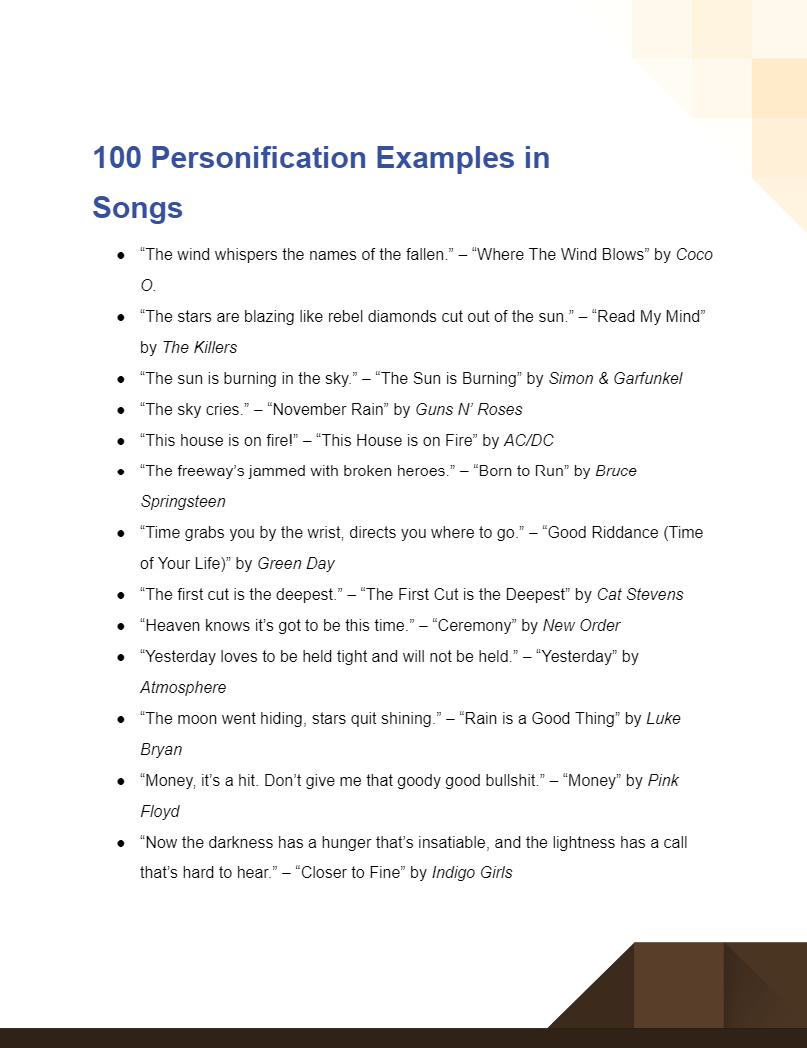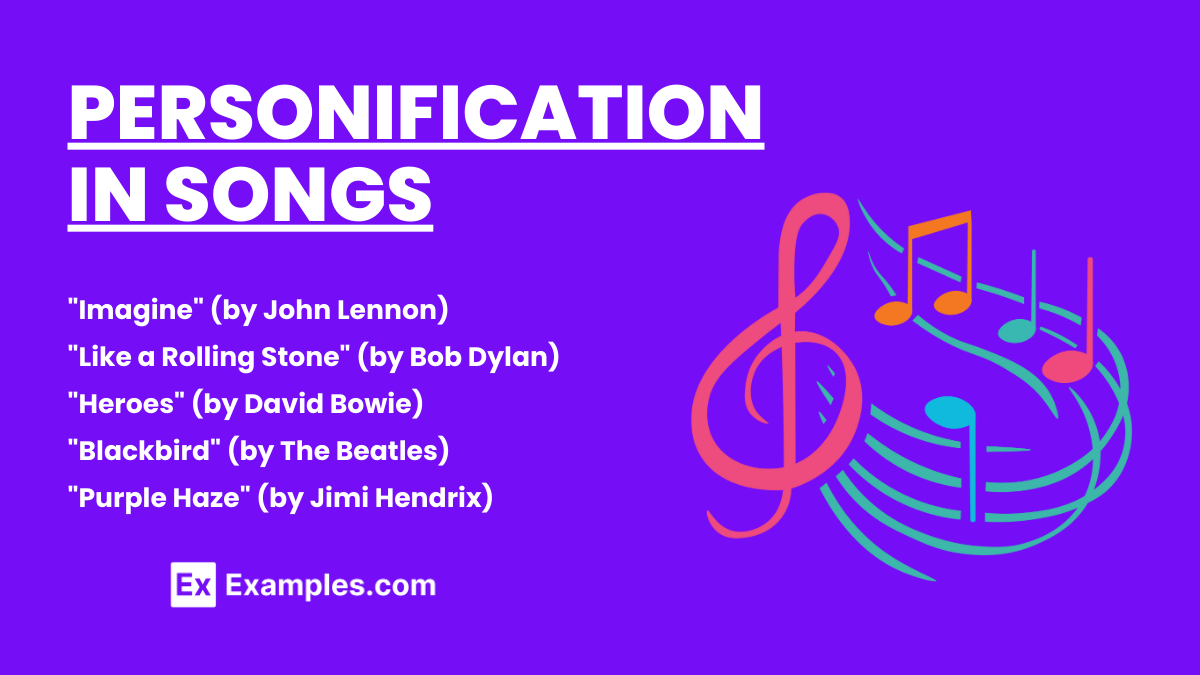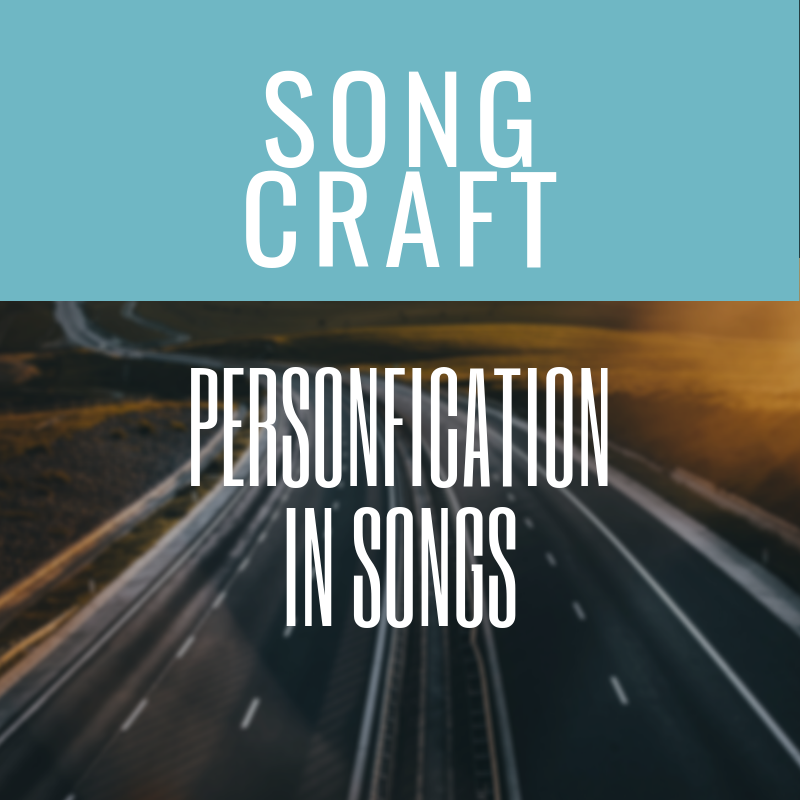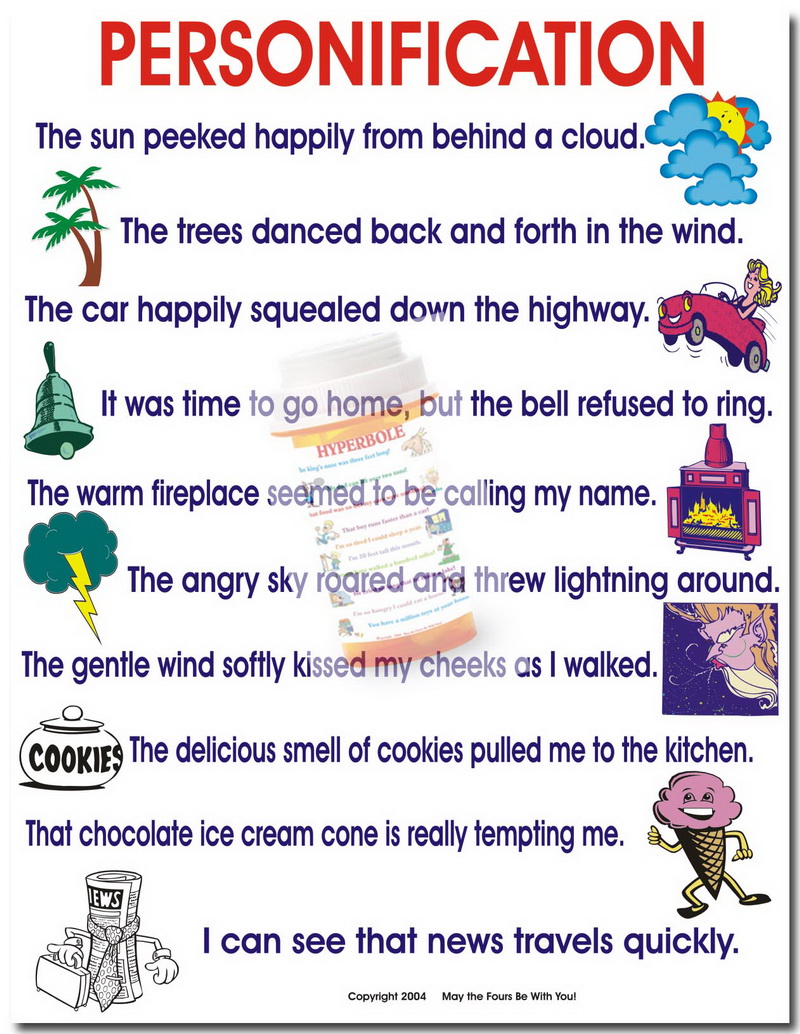What Are Some Songs With Personification

Music, a universal language, often transcends simple storytelling, venturing into the realm of imaginative expression. Personification, the attribution of human qualities to inanimate objects or abstract concepts, is a potent tool in a songwriter's arsenal, breathing life into the non-living and creating vivid imagery that resonates deeply with listeners.
This article delves into the world of personification in music, exploring notable songs where inanimate objects, forces of nature, or abstract ideas are given human characteristics, enhancing the emotional depth and lyrical impact of the music. We will examine specific examples across various genres, highlighting how this literary device transforms the listening experience.
The Nut Graf: Personification's Power in Songwriting
Personification in songwriting elevates lyrics from mere descriptions to evocative narratives. By imbuing the non-human with human attributes, songwriters create relatable scenarios and tap into universal emotions. This technique fosters a stronger connection between the listener and the song's message.
The goal is to understand how personification functions, and what makes it a timeless technique across diverse musical styles.
Classic Examples of Personification in Music
One classic example is Bob Dylan's "Blowin' in the Wind." The song uses personification to give the wind the ability to hold the answers to life's most profound questions. This gives the song an introspective and questioning quality.
Similarly, in Simon & Garfunkel's "The Sound of Silence," the "darkness" is personified as a speaking entity. The darkness tells of a message of misunderstanding and lack of communication in society.
Eric Clapton's "Tears in Heaven" arguably personifies heaven itself as a place capable of offering comfort and understanding. Heaven becomes more than just a destination; it possesses a tangible presence and compassionate qualities.
Modern Applications of Personification
In more contemporary music, Adele's "Rolling in the Deep" features the line, "We could have had it all, rolling in the deep," where the "deep" is personified as a powerful, emotional force. It becomes a metaphor for the depth of their relationship and the emotional turmoil she's experiencing.
Coldplay's "Fix You" uses personification when singing about lights guiding the subject home, and tears streaming down face. This adds an emotional resonance that simple description wouldn't provide.
Personification isn't limited to serious or melancholic themes. In Queen's "Bohemian Rhapsody," "Scaramouche" and "Beelzebub" are given personalities and roles, adding a dramatic flair to the operatic section of the song.
The Impact and Effectiveness of Personification
The use of personification significantly enhances the emotional impact of a song. By giving human characteristics to abstract concepts or inanimate objects, songwriters create relatable narratives. This helps listeners connect with the song on a deeper, more personal level.
Personification also allows for a more creative and imaginative expression of ideas. It allows songwriters to explore complex themes in a way that is both accessible and thought-provoking. This is what makes it such a powerful tool in music.
According to Dr. Emily Carter, a professor of musicology at the University of Southern California, "Personification, when used effectively, bridges the gap between the abstract and the concrete, allowing listeners to emotionally engage with even the most complex concepts. It gives songs a deeper meaning."
Looking Ahead: The Future of Personification in Music
As music continues to evolve, the use of personification will likely remain a valuable tool for songwriters. New artists will find creative ways to imbue their lyrics with this timeless literary device. That allows new generations to find their own unique voices and express themselves.
The enduring appeal of personification lies in its ability to make the intangible tangible. It will continue to be a powerful force in songwriting for years to come.
Ultimately, personification will always have a place in music as long as songwriters seek to connect with their audience on an emotional and meaningful level.


















